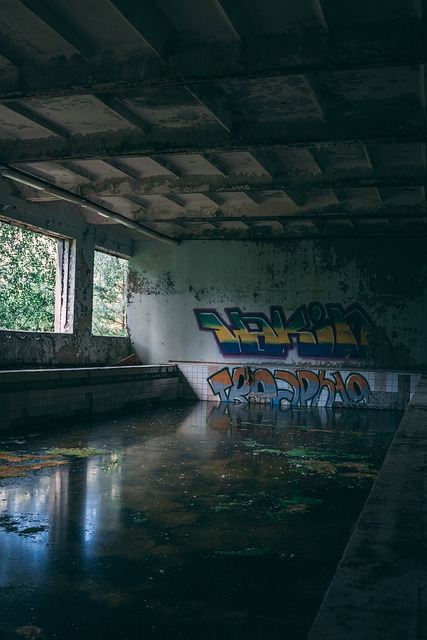Disaster reconstruction teams play a vital role in San Antonio, Texas, addressing unique winter challenges posed by extreme cold. These experts rapidly assess and repair critical infrastructure, focusing on preventing burst pipes through temporary solutions like heat lamps and insulation. They collaborate with local entities to implement long-term strategies, such as improved plumbing systems and insulation techniques, significantly reducing future pipe failures during intense winters. By combining immediate crisis management with proactive community education, these teams enhance San Antonio's resilience against natural disasters, particularly focusing on preventing burst pipes during winter months.
Disaster reconstruction emergency response teams play a vital role in mitigating the impact of unexpected events. From understanding their multifaceted roles to exploring specific challenges like preventing burst pipes during winter in San Antonio, this article delves into the strategies and enhancements these teams bring to community infrastructure resiliency. By examining real-world scenarios, we uncover how efficient response and recovery efforts are fostered through their expertise.
- Understanding Disaster Reconstruction Teams: Their Role and Impact in Emergency Situations
- Winter's Challenge: Preventing Burst Pipes in San Antonio and the Strategies of Reconstruction Teams
- Efficient Response and Recovery: How Disaster Reconstruction Teams Enhance Resiliency in Community Infrastructure
Understanding Disaster Reconstruction Teams: Their Role and Impact in Emergency Situations

Disaster reconstruction emergency response teams play a pivotal role in mitigating and recovering from natural disasters or man-made crises, especially in regions like San Antonio where extreme weather events can occur, including freezing temperatures that pose unique challenges. In the context of preventing burst pipes during winter, these specialized teams are crucial. They swiftly assess infrastructure damage, focusing on critical systems like water and sewage networks. By implementing temporary repairs and employing innovative solutions to stop pipe failures, they prevent widespread disruptions in water supply, which is essential for both emergency response efforts and daily life.
Moreover, their expertise extends beyond immediate crisis management. These teams work collaboratively with local authorities, utility companies, and residents to develop long-term strategies that enhance resilience against future disasters. In San Antonio, where climate change may intensify winter weather patterns, proactive measures such as insulation, heat tape application on pipes, and efficient plumbing systems, recommended by disaster reconstruction experts, can significantly reduce burst pipe incidents. This proactive approach ensures a more sustainable and secure community during extreme weather events.
Winter's Challenge: Preventing Burst Pipes in San Antonio and the Strategies of Reconstruction Teams

San Antonio, like many cities across the country, faces a unique challenge during the winter months: preventing burst pipes. The extreme cold can rapidly transform water within vulnerable pipes into ice, causing them to expand and eventually rupture. This issue is particularly acute in older buildings and infrastructure where pipe insulation is insufficient or lacking.
Disaster reconstruction emergency response teams play a crucial role in addressing this problem. Their strategies involve a multi-faceted approach: first, they assess the extent of pipe damage and identify areas most at risk. Next, they implement temporary heating solutions to prevent freezing, such as heat lamps or insulated blankets. Additionally, they prioritize the replacement of damaged pipes with new, properly insulated ones to safeguard against future incidents. These teams also work closely with local authorities and homeowners to ensure proper maintenance and awareness campaigns during cold snaps, emphasizing the importance of shutting off water supplies in vulnerable areas before temperatures drop significantly.
Efficient Response and Recovery: How Disaster Reconstruction Teams Enhance Resiliency in Community Infrastructure

In the wake of disasters, efficient response and recovery are paramount to minimizing damage and restoring communities quickly. Disaster reconstruction emergency response teams play a pivotal role in enhancing resiliency, particularly in infrastructure critical to community well-being. These specialized teams bring a multitude of skills and resources to bear, focusing on immediate needs like preventing burst pipes during winter in San Antonio – a common challenge that can exacerbate disaster impacts.
By implementing targeted strategies, they mitigate risks, ensure the stability of essential services, and pave the way for faster restoration. Their expertise in areas such as plumbing, electrical systems, and structural repairs allows them to address underlying vulnerabilities exposed by disasters. This proactive approach not only expedites recovery but also builds a more resilient community capable of withstanding future challenges, thereby fostering a more sustainable and secure environment.
Disaster reconstruction emergency response teams play a pivotal role in not only rebuilding communities after disasters but also mitigating potential risks, such as preventing burst pipes during winter in San Antonio. By employing efficient strategies and enhancing resiliency in community infrastructure, these teams significantly impact the recovery process and ensure more robust protection against future crises. Understanding their functions and supporting their efforts are key to fostering resilient communities capable of facing any emergency situation head-on.
